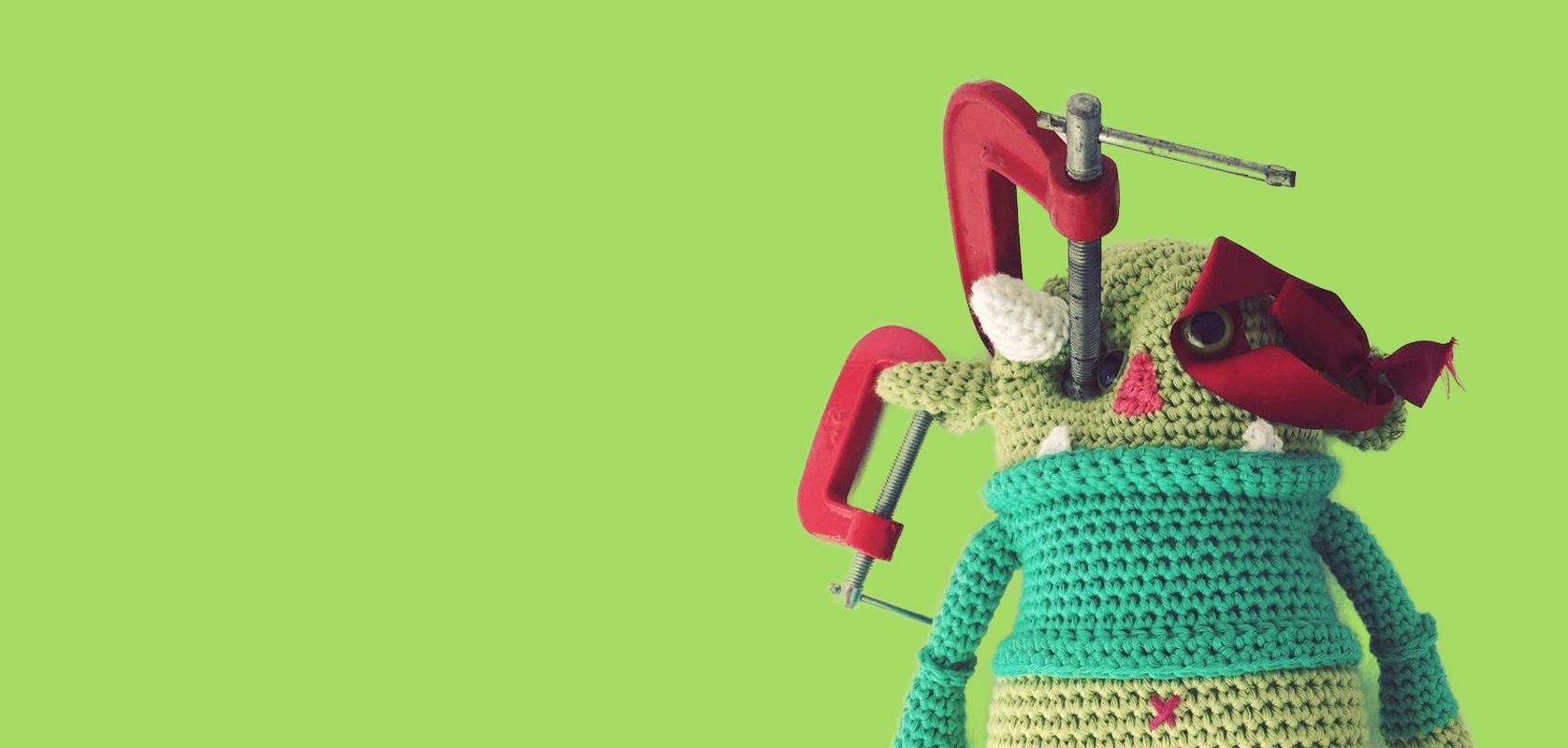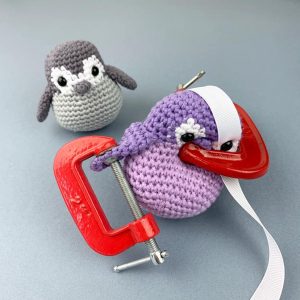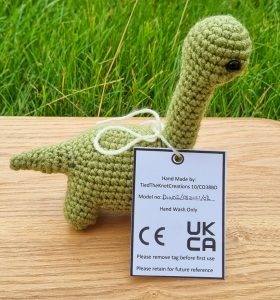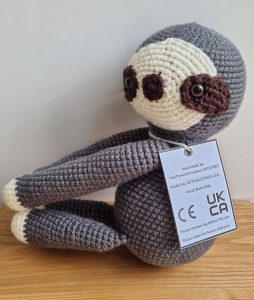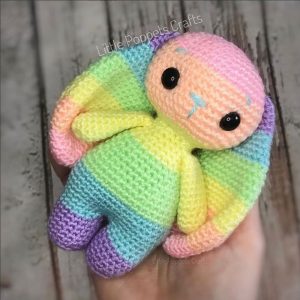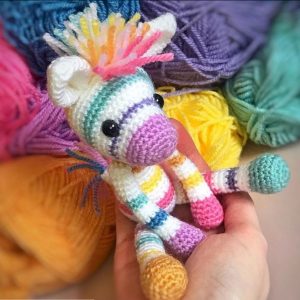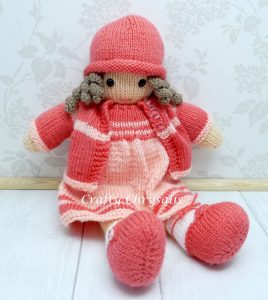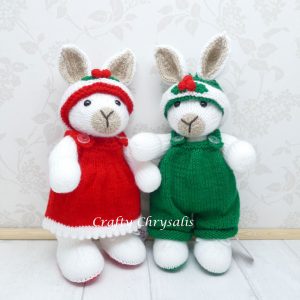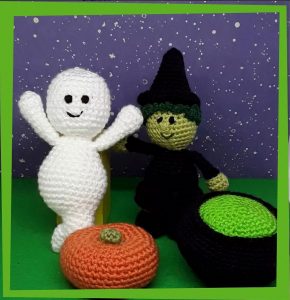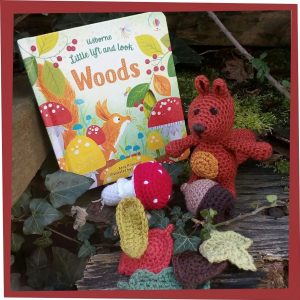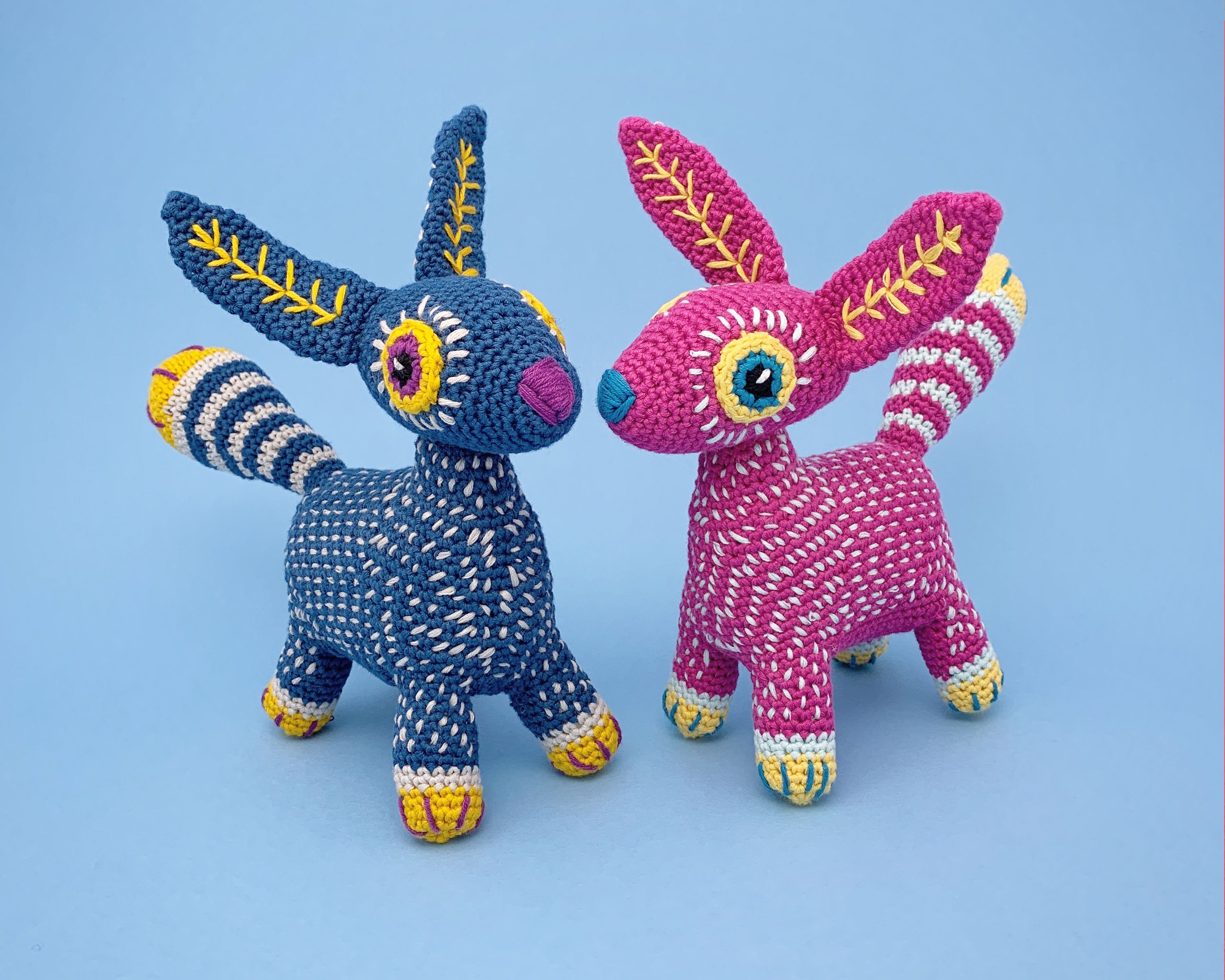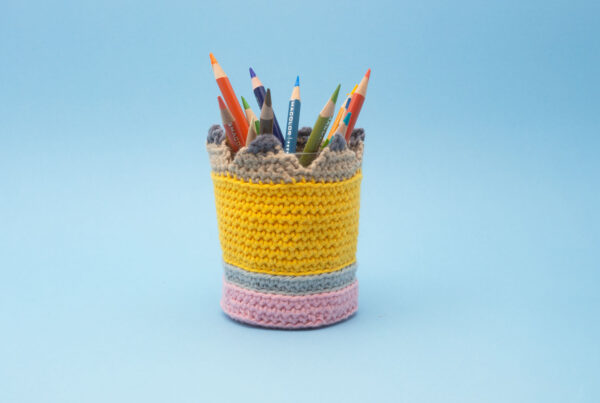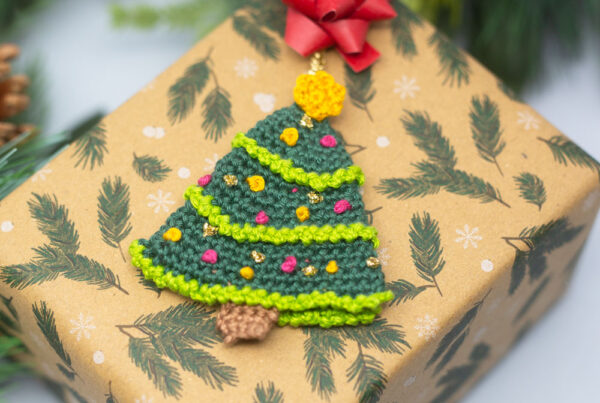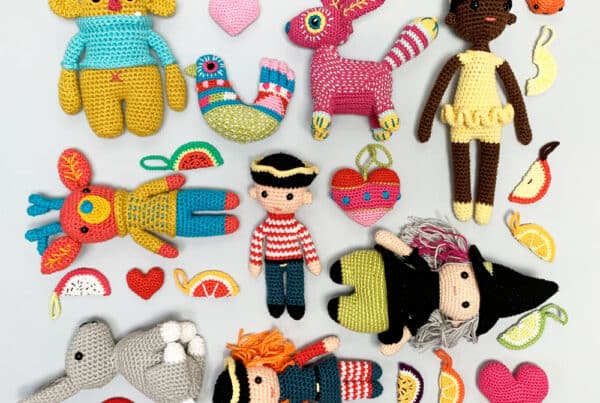CE/UKCA Toy safety testing
(and why I don’t make toys to sell anymore)
CE/UKCA testing can be a bit daunting when you fist find out about it. Here I talk about my experience and hopefully give you a starting point if you are thinking of venturing into toy making.
*please note, regulations change from time to time. The information below is not complete and may not be up to date*
I made my first toy (a sock monster) back in 2008. They were so much fun to make I soon had quite a lot and I didn’t know what to do with them. So I signed up to Bust’s Craftacular in London (it was their first fair). I had a prime place and amazing footfall. The day was enormous fun and I did very well. This was the moment my craft business was born. Of course, back then CE testing didn’t apply to handmade toys but in 2011 the rules changed and now all handmade toys have to be tested. All soft toys now have to be suitable from birth and anything that has play value has to carry a CE mark if selling in Europe and Northern Ireland and/or a UKCA mark if selling in the UK. Whilst you can send your toys away to be tested at a lab, this can be expensive, so most handmade toy makers will do the tests at home. This is called ‘self-certification’. You don’t require any special equipment and the tests are very simple to do once you get your head around the order they need to take place. You can get all the information you need online on government websites, but there is quite a lot of information to go through and not all of it is relevant to soft toys.
The good thing is there are companies out there (like Conformance) who sell packs especially for soft toys. The packs include information on the the tests you need to do, how you can perform them with things you have around the house and the order they need to be done in. They also come with templates of all the documents you must complete, all you need to do is add your details. (See the end of this post for links to resources and more information if you are thinking of CE/UKCA testing your toys).
There are 3 types of test you need to complete on your toys;
1. The Chemical test
This test is the only one you can’t perform at home. You need to research every material you have used in your toy to check there are no nasty chemicals that could be harmful (think about a baby chewing on a toy). To do this you will need to contact the manufacturer to see if they have an EN71-3 certificate which states all chemicals used are within a safe range. This is not always easy to get hold of or they may not have the documentation you need if it is not a requirement for them. If this is the case then you will either have to pay to get the materials tested at a lab or find a suitable alternative which you can get a certificate for.
Once you have gained the certificates for your materials you will then need to make two identical toys for you to perform the other tests on. One toy needs to be washed before any tests are performed (the other toy will be unwashed). You will need to perform the tests on each toy design you have, for example, if you have a lion, an elephant and a doll in your range, you will need two of each to perform each test.
2. The Mechanical or Physical Test
Above photos: Seam stress tests on my penguins and test photo from Bags of Imagination.
The mechanical test checks the strength of the toy and how it would hold up to rough play. Specified weights are hung off possible weak points like the seams for a set length of time and then inspected for any damage. Weights are also hung off things like safety eyes and buttons. Just using safety eyes does not mean they are safe (I have had plenty fail in my time). Other tests include drop tests to check no parts are damaged on impact and the small parts check to insure there are no chocking hazards.
3. The Flammability Test
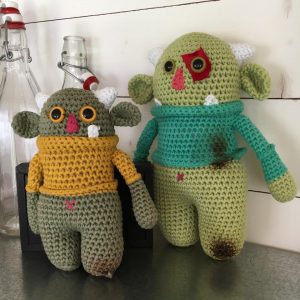
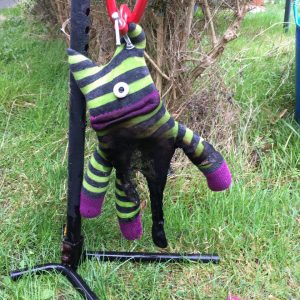
Above photos: Two of my Ogres that passed the flammability tests and my sock monster looking a bit worse for wear!
In this test a flame is held a certain distance from the toy to see if it catches. If it does, then the time it takes to spread across the toy is measured. It will pass if it is within the deemed safe limit.
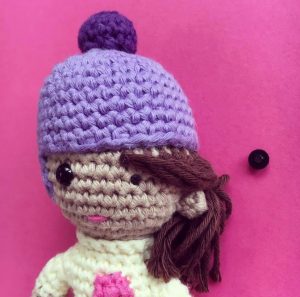
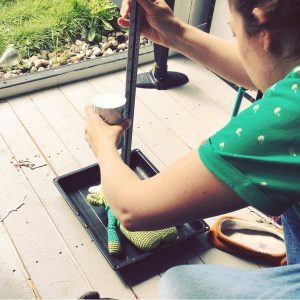
Above photos: Failed test on a safety eye and drop test on my Ogre.
Documentation
After all the tests are complete and everything passed, you will need to fill out all the relevant forms and safety declaration. If your toy didn’t pass then you will need to make changes to your design to ensure it does which may mean you need to make new test samples to perform the tests again.
I have only really skimmed the process here, you will also need to research how to correctly label your toy and how to number each one for reference. There is an awesome group on Facebook you can join with a wealth of information from members and files. They also have a lot of EN71:3 certificates available to buy and they often get materials tested too. You can also find out about making hybrid toys to test if a couple of your designs are very similar. (See resource links at the bottom of this post).
Craft kits
I used to sell sock monster making kits and also some crochet kits, but I found out that these also need to be tested. Even if the kit is aimed at adults to make but the resulting toy has play value, the finished toy needs to go through the same tests as above. It seems quite strange that even though someone else will be making the toy you need to perform the tests, but the idea is, that if you give sufficient instructions, safe materials and the instructions are performed to the letter a safe toy will be created. Of course, if that person goes onto sell that toy themselves, they will need to perform all the necessary safety tests too.
So why don’t I CE/UKCA test and sell my toys anymore?
There are three main reasons, the first was I found it too stressful! I unfortunately couldn’t get my sock monsters to pass the test. The sock fabric was too stretchy and the seam test would always fail. I did test some of my crocheted toys and they passed, but sometimes the safety eyes would fail. The heart palpations I felt as I slowly lifted the 9.2kg weight off one little safety eye was not worth it (I can feel it now just writing this).
The second reason is that crocheted toys are not especially quick to make (well, for me anyway). If I were to pay myself a decent hourly wage, my toys would be much too expensive, it’s just not financially viable. (There could be another whole blog post on this subject).
The biggest reason though, is I much prefer to design than to churn out the same toy over and over. The design process for me is extremely enjoyable, I always have a least 10 designs in my head I want to get on with. But I do so love doing a craft fair so maybe one day…
The good news is there are lots of amazing makers out there CE/UKCA testing their toys making sure they are completely safe for little ones. So when buying soft toys (or any toys for that matter) make sure you look for the CE/UKCA mark on a label. Below are some of these makers, click on their photos to see there shops and pages:
Little Poppets Crafts
Crafty Chrysalis
Common CE testing myths
“If I label my toy ‘for decorative use only’ I don’t need to test my toys”
The law states that if anything has ‘play value’ and is accessible to a chid to play with then it needs to be tested. The only way you can get around this is if you physically mount the item on a plinth or frame of some sort so that it is not accessible to children.
“I only sell a few toys here and there, I don’t need to test”
Yes you do, if you are selling toys you need to test
“I’ll just add a ‘not suitable for under 36 months’ label to cover myself”
If you are selling soft toys they have to be suitable from birth and this warning cannot be used. (For other toys that are not soft (ie wooden) this rule is different.
“I am donating the toys I make to charity so I don’t need to test”
Again, all toys sold or donated to charity need to be tested.
“The materials I use are all CE/UKCA tested so I don’t have to”
Wrong again, you still need to test. The mechanical tests make sure the construction of the toy you have made is safe no matter whether the materials are already certified or not.
If you have any questions about CE/UKCA testing please comment below.
Resource links:
UK Government Website about UKCA marks: https://www.gov.uk/guidance/using-the-ukca-marking
Conformance (independent company specialising in helping large and small business with testing): https://www.conformance.co.uk
CE/UKCA marked soft toy support network (Facebook group): https://www.facebook.com/groups/779808745368557
Another resource in the UK is Trading Standards, look up the one in your local area and you can ask questions.

